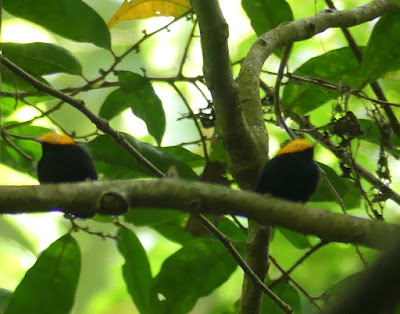This was a beautiful place. Matt Hysell has some good photos and narrative on his Darién edition of Birding Berrien and Beyond titled teak farm birding - part 1 that I recommend. Matt includes a photo of flyover Great Green Macaws that I was not fast enough to get on. There are only about 4,500 remaining in the wild so this was a good bird to see and photograph. He also got a very nice photo of Barred Puffbird - the only one we saw on the trip - in a spot where the lighting and other conditions were just too challenging for my camera and photographic skills.
As soon as we arrived here I knew it was going to be good. The thing is, this is where I also confirmed that I would have trouble with my photographs for the remainder of the trip - i.e. my photos of birds, butterflies and dragonflies.
Above: Perched Fork-tailed Flycather (Tyrannus savana) - even though we saw more on this trip than we saw on all of our previous trips combined, I'm still looking for my first good photo-op.
As soon as we arrived here I knew it was going to be good. The thing is, this is where I also confirmed that I would have trouble with my photographs for the remainder of the trip - i.e. my photos of birds, butterflies and dragonflies.
The landscape was beautiful.
Male Black-tailed Trogon (Trogon melanurus)
We spent all morning on this long, sandy road.
Flyover Wood Stork (Mycteria americana)
Above and below: More landscape.
Above: Perched Fork-tailed Flycather (Tyrannus savana) - even though we saw more on this trip than we saw on all of our previous trips combined, I'm still looking for my first good photo-op.
Above: I can't even be sure, but I think this is my Barred Puffbird (Nystalus radiatus) photo. It was in the right spot amongst my photos for the morning.
The teak farm was also a great location for dragonflies and butterflies and I was easily distracted by these. I'll include the decent photos I got of both in a later post.








































